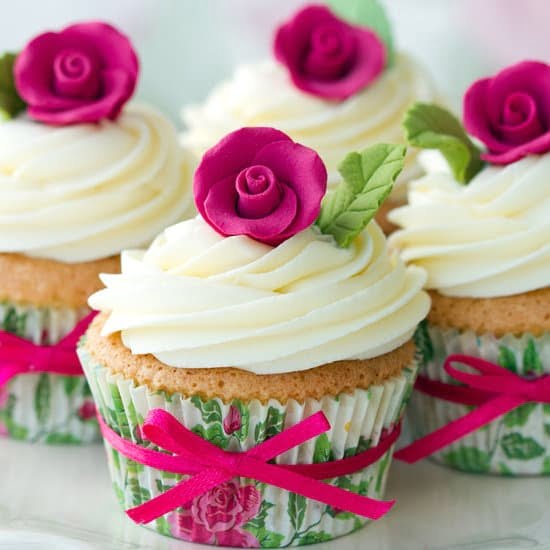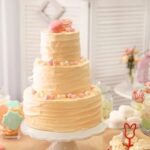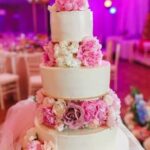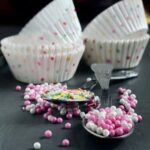Are you looking to elevate your cake decorating skills? Look no further. In this article, we will explore the art of making buttercream icing for cake decorating. Whether you’re a novice baker or an experienced pastry chef, mastering the art of buttercream icing is essential for creating beautiful and delicious cakes. If you’ve ever wondered how to make buttercream icing for cake decorating, we’ve got you covered with step-by-step instructions and expert tips.
Buttercream icing is a classic choice for decorating cakes due to its smooth texture and versatility. Whether you want to create intricate designs or simply spread a smooth layer over a cake, buttercream icing is the perfect choice. In this article, we will delve into the importance of buttercream icing in cake decorating, discuss the essential ingredients needed, and provide detailed instructions on how to achieve the perfect consistency.
From basic vanilla buttercream to unique flavored variations, there are endless possibilities for creating stunning cake decorations with buttercream icing. Additionally, we will explore various techniques for decorating cakes with buttercream and provide troubleshooting tips for common issues that may arise during the process. By the end of this article, you’ll be well on your way to mastering the art of buttercream icing for cake decorating.
The Importance of Buttercream Icing in Cake Decorating
Buttercream icing is a crucial component in the world of cake decorating. It serves as the canvas for creative designs and provides the perfect base for various decorating techniques. The importance of buttercream icing in cake decorating cannot be overstated, as it not only enhances the flavor of the cake but also allows for endless possibilities in terms of decoration.
One of the key reasons why buttercream icing is so important in cake decorating is its versatility. It can be easily colored, flavored, and piped into intricate designs, making it an ideal choice for all types of cakes, whether it’s a simple birthday cake or an elaborate wedding cake. Additionally, buttercream icing has a smooth and creamy texture that makes it easy to work with, allowing both beginners and experienced decorators to achieve professional-looking results.
Another reason for the significance of buttercream icing in cake decorating is its ability to act as a “glue” for holding fondant, gum paste, or other decorations in place on the cake. This makes it an essential component for creating structurally sound and visually stunning designs. Whether it’s creating delicate flowers or adding intricate details to a cake, buttercream icing provides an essential foundation for these decorative elements.
Furthermore, buttercream icing adds richness and moisture to cakes, ensuring that they not only look beautiful but also taste delicious. Its smooth and creamy texture complements the crumb of the cake, resulting in a harmonious blend of flavors and textures. As such, mastering the art of making buttercream icing is essential for anyone looking to excel in the world of cake decorating.
| Key Reasons | Importance |
|---|---|
| Versatility | Endless possibilities in decoration |
| “Glue” for decorations | Helps hold fondant, gum paste, etc. on the cake |
| Richness and Moisture | Enhances flavor and texture of cakes |
Ingredients Needed for Buttercream Icing
Buttercream icing is a versatile and essential component of cake decorating. In order to make the perfect buttercream icing for your cakes, you will need a few key ingredients. The main components of buttercream icing include unsalted butter, powdered sugar, vanilla extract, and heavy whipping cream or milk.
The primary ingredient in buttercream icing is unsalted butter, which provides the creamy and rich base for the icing. It is important to use unsalted butter to have control over the salt content in the final product. Additionally, powdered sugar is used to sweeten and thicken the icing, giving it the desired consistency for decorating cakes. Vanilla extract adds flavor to the icing, while heavy whipping cream or milk helps to achieve the ideal texture.
When making buttercream icing for cake decorating, it is crucial to ensure that these ingredients are at room temperature. This will help them blend together seamlessly and create a smooth and creamy consistency. By using these essential ingredients in the right proportions, you can create delicious and visually appealing buttercream icing to elevate your cake decorating skills.
| Ingredient | Function |
|---|---|
| Unsalted Butter | Provides a creamy base for the icing |
| Powdered Sugar | Sweetens and thickens the icing |
| Vanilla Extract | Adds flavor to the icing |
| Heavy Whipping Cream or Milk | Achieves ideal texture for cake decoration |
Step-by-Step Instructions on How to Make Buttercream Icing
Making buttercream icing for cake decorating is a crucial skill for any baker or cake decorator. This versatile icing can be used to create smooth finishes, intricate designs, and even piped flowers on cakes. Follow these step-by-step instructions to learn how to make buttercream icing for your next cake decorating project.
To make classic buttercream icing, you will need the following ingredients:
- 1 cup (2 sticks) of unsalted butter, softened
- 4 cups of powdered sugar
- 1 teaspoon of vanilla extract
- 2-4 tablespoons of heavy cream or milk
Steps:
- In a large bowl, beat the softened butter until creamy using a hand mixer or stand mixer.
- Gradually add the powdered sugar to the butter, mixing well after each addition.
- Add the vanilla extract and 2 tablespoons of heavy cream or milk to the mixture and beat until smooth. If the consistency is too thick, gradually add more cream or milk until you reach your desired consistency.
Once you have mastered the basic recipe for buttercream icing, you can experiment with flavored variations such as chocolate, strawberry, lemon, or caramel. These flavored variations can add depth and complexity to your cake decorating projects and complement different cake flavors beautifully.
Remember to adjust the amount of liquid (milk or cream) added based on the type of flavoring you are incorporating into your buttercream icing. Expert tip: Start with small amounts of flavoring and adjust to taste as you go.
Tips and Tricks for Perfect Buttercream Icing Consistency
When it comes to perfecting your buttercream icing, consistency is key. Achieving the right texture can make all the difference in how your cake looks and tastes. Whether you’re a beginner or an experienced baker, these tips and tricks will help you achieve the perfect buttercream icing consistency for your cake decorating needs.
First, it’s important to start with the right tools and ingredients. Investing in a good quality stand mixer or handheld mixer will make the process much easier. Additionally, using room temperature butter and sifted powdered sugar will ensure that your buttercream comes together smoothly without any lumps or graininess.
Next, pay attention to the ratio of butter to powdered sugar. A common mistake is adding too much powdered sugar, which can result in a stiff and overly sweet icing. Aim for a 1:2 ratio of butter to powdered sugar for a creamy and smooth consistency.
Lastly, don’t be afraid to adjust the consistency of your buttercream icing as needed. If your icing is too thick, simply add a small amount of milk or cream until it reaches your desired texture. On the other hand, if it’s too thin, gradually add more powdered sugar until it thickens up.
By following these tips and tricks, you’ll have no trouble achieving the perfect buttercream icing consistency for all your cake decorating projects.
- Use room temperature ingredients for easy mixing
- Aim for a 1:2 ratio of butter to powdered sugar
- Adjust consistency as needed with milk or more powdered sugar
Flavored Variations of Buttercream Icing for Different Cake Decorating Themes
One of the most exciting aspects of working with buttercream icing is the ability to customize it with different flavors to complement various cake decorating themes. From classic vanilla and chocolate variations to more unique flavor combinations, there are endless possibilities for creating beautifully decorated cakes with delicious buttercream icing.
For a classic and versatile option, vanilla buttercream icing is a popular choice for many cake decorators. Its light and fluffy texture pairs well with almost any cake flavor, making it a go-to option for many bakers. To enhance the vanilla flavor, you can add a touch of pure vanilla extract or vanilla bean paste to achieve a rich and aromatic taste.
On the other hand, chocolate buttercream icing is a decadent choice that adds a rich and indulgent flavor to cakes. By incorporating high-quality cocoa powder or melted dark chocolate into the buttercream base, you can create a luscious frosting that complements chocolate, red velvet, or even peanut butter-flavored cakes. This variation can also be adjusted to achieve either a deep, dark chocolate flavor or a lighter milk chocolate taste based on personal preference.
In addition to these classic flavors, there are numerous other options for infusing buttercream icing with unique tastes to suit specific cake decorating themes. Some examples include adding citrus zest for a refreshing twist, incorporating espresso powder for a subtle coffee flavor, or mixing in fruit purees such as raspberry or mango for vibrant and fruity variations. These flavored buttercream icings offer endless opportunities for creativity in cake decorating and can elevate the overall presentation of your baked creations.
Techniques for Decorating Cakes With Buttercream Icing
Decorating cakes with buttercream icing is a creative and enjoyable process that allows for endless possibilities. Whether you’re a beginner or an experienced baker, using buttercream icing to decorate cakes can be both fun and rewarding. With the right techniques, you can achieve professional-looking results that will impress your friends and family.
Piping Techniques
One of the most popular ways to decorate cakes with buttercream icing is through piping. This technique involves using a piping bag fitted with different tips to create various designs and textures on the cake. You can create swirls, rosettes, stars, shells, and even intricate floral designs by mastering different piping tips. Experimenting with different tip sizes and styles can lead to beautiful and unique cake decorations that are sure to impress.
Smooth Buttercream Finish
Achieving a smooth finish on a cake with buttercream icing may seem daunting at first, but with practice and the right tools, it can be easily accomplished. To give your cake a flawless finish, start by applying a thin layer of icing as a crumb coat.
Once the crumb coat is set, use an offset spatula to apply an even layer of buttercream icing around the sides and top of the cake. Then, use a bench scraper or icing smoother to gently smooth out any imperfections for a clean and polished look.
Adding Texture and Dimension
In addition to traditional piping techniques, there are other ways to add texture and dimension to your cakes with buttercream icing. For example, you can create ruffles or waves by using a petal tip or achieve a textured look by using a comb scraper. You can also incorporate edible decorations like sprinkles, edible glitter, or fondant accents to add dimension and visual interest to your cake design.
By learning these various techniques for decorating cakes with buttercream icing, you can elevate your cake decorating skills and create beautiful custom designs for any occasion. Whether you’re looking to perfect classic techniques or experiment with new trends in cake decorating, mastering these skills will help you take your creations to the next level.
Troubleshooting Common Buttercream Icing Issues
Buttercream Too Runny
If your buttercream icing is too runny, it may be due to the ratio of ingredients being off. To fix this issue, you can try adding more powdered sugar to help thicken the consistency. Another option is to chill the icing in the refrigerator for about 15 minutes before using it. This can help firm up the buttercream and make it easier to work with.
Buttercream Too Stiff
On the other hand, if your buttercream icing is too stiff, it can be challenging to spread or pipe onto your cake. To soften the buttercream, try adding a small amount of liquid such as milk or heavy cream while mixing. It’s best to add this liquid gradually until you reach the desired consistency. You can also place the bowl of stiff buttercream over a pot with warm water and gently stir until it softens.
Grainy Texture
Sometimes, buttercream icing can end up with a grainy texture, which is not ideal for cake decorating. This issue often occurs when the powdered sugar is not fully dissolved in the mixture. To fix this problem, consider sifting your powdered sugar before adding it to the butter and continue mixing until smooth. If your butter is too cold or firm, try warming it slightly before blending with other ingredients.
By addressing these common issues, you’ll be better equipped to troubleshoot any problems that may arise when making and using buttercream icing for cake decorating. With practice and patience, you’ll be able to master the art of creating perfect buttercream every time.
Conclusion
In conclusion, mastering the art of buttercream icing for cake decorating is an essential skill for anyone who wants to create beautiful and delicious cakes. With the right ingredients and techniques, you can create stunning designs and decorations that will impress your friends and family. Whether you’re a beginner or an experienced baker, learning how to make buttercream icing for cake decorating is a valuable skill that will take your creations to the next level.
By understanding the importance of buttercream icing in cake decorating, you can appreciate its versatility and ability to hold different shapes and designs. Additionally, knowing the ingredients needed, step-by-step instructions, tips for perfect consistency, flavored variations, and troubleshooting common issues will help you become a master at creating beautiful cakes.
With practice and patience, you can develop your own unique style and techniques for decorating cakes with buttercream icing. Whether it’s for a birthday party, wedding, or any special occasion, your beautifully decorated cakes will surely be the talk of the event. So get started today and elevate your cake decorating skills by learning how to make buttercream icing for cake decorating.
Frequently Asked Questions
What Is the Best Type of Buttercream Frosting for Decorating?
The best type of buttercream frosting for decorating is American buttercream. It is easy to work with, holds its shape well, and can be tinted with food coloring. Its smooth texture makes it perfect for detailed decorations.
What Is the Trick to Buttercream Frosting?
The trick to buttercream frosting is to ensure that the butter is at the right temperature before mixing in the powdered sugar. It should be softened but not melted, which will result in a smooth and creamy texture. Gradually adding the powdered sugar while mixing is also important to avoid lumps.
What Is the Formula for Buttercream Frosting?
The formula for buttercream frosting typically involves beating together softened unsalted butter with powdered sugar until light and fluffy. Depending on the desired consistency, flavorings such as vanilla extract or heavy cream may be added. The ratio of butter to powdered sugar can be adjusted to achieve the desired sweetness and texture.

Welcome to our cake decorating blog! My name is Destiny Flores, and I am the proud owner of a cake decorating business named Cake Karma. Our mission is to provide delicious, beautiful cakes for all occasions. We specialize in creating custom cakes that are tailored specifically to each customer’s individual needs and tastes.





